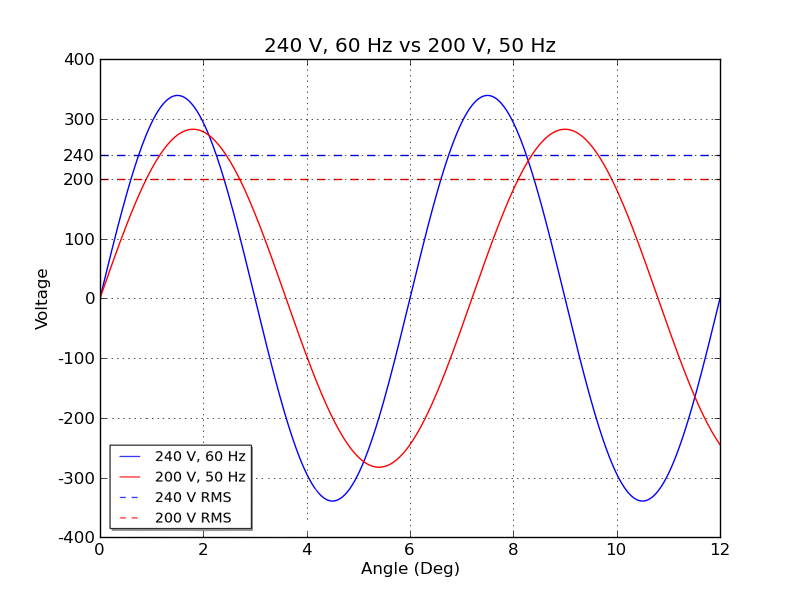A question we are often asked is, “Can a motor that is rated for 60 Hz be run at 50 Hz (or vice versa)?” There are several issues that can arise when running a motor at a different frequency than the name plate frequency.
In our previous blog, AC Motor Basics, we explained the synchronous speed of an AC motor is determined by two factors: the number of poles in the motor and the frequency of the input power to the motor. For a given motor, the number of poles cannot be changed because it is determined by the physical construction of the motor. The frequency of the input power is determined most often by the electrical distribution system in the country that the motor is being operated in. The most common frequencies are 50 Hz and 60 Hz.
Decreasing the frequency on an AC motor decreases its speed. On fan-cooled AC motors, a slower speed can mean the fan doesn’t cool the motor off as well. This could mean that the motor’s continuous rated duty torque will decrease as well. A slower motor also means the rated power of the motor will decrease.

Another important parameter that changes when frequency changes is the ratio of Volts to Hertz. AC motors are designed to operate at a particular V/Hz ratio. In an AC motor, the resistance changes as the frequency changes. If voltage is held constant while resistance decreases, then the current will increase. Increased current may provide more torque but it will also cause more resistive losses in the motor, which may cause the motor to overheat. Similarly, if the voltage is held constant while resistance increases, then the current will decrease. Decreased current means the motor will have less torque. In order to avoid both of these situations, a constant V/Hz ratio should be maintained. This is the principle behind how many variable frequency drives work. By maintaining a constant V/Hz ratio, the current drawn by the motor is kept the same and the motor can maintain torque at varying speeds. It also means that a motor that is rated for 240 VAC, 60 Hz (V/Hz = 240/60 = 4) can be run at 200 VAC, 50 Hz (V/Hz = 200/50 = 4).
Whenever possible a motor should be picked that is rated for the frequency of the power of the country that the motor will operate in. If the motor needs to work at 50 Hz and 60 Hz, many manufacturers, including Groschopp, make motors that are rated at both frequencies. Additionally as we’ve seen above, while it is possible to run a motor at a higher or lower frequency than what it is rated for in certain situations, it is not always practical due to changes in torque, current draw and motor losses.


